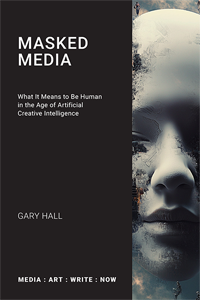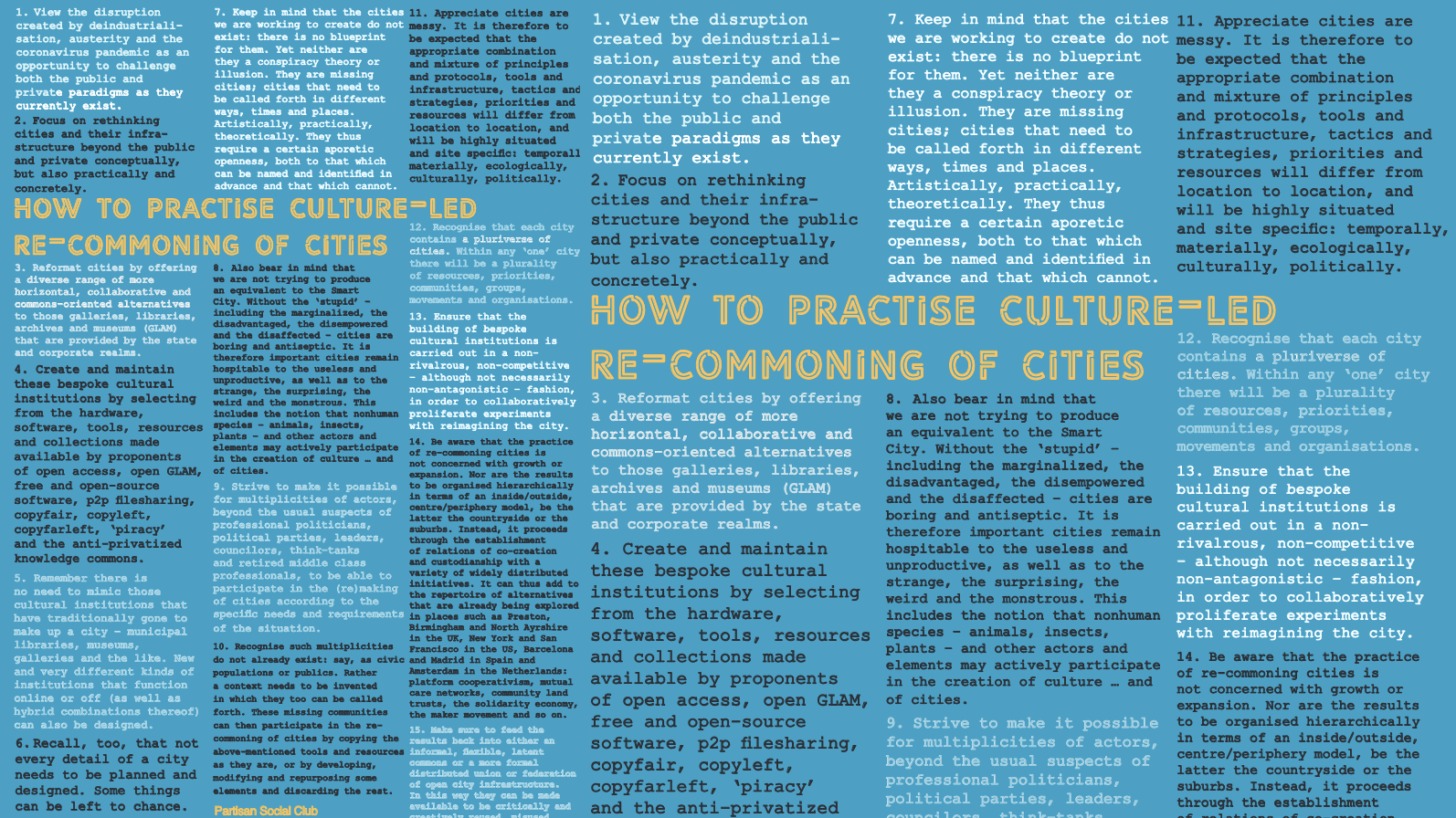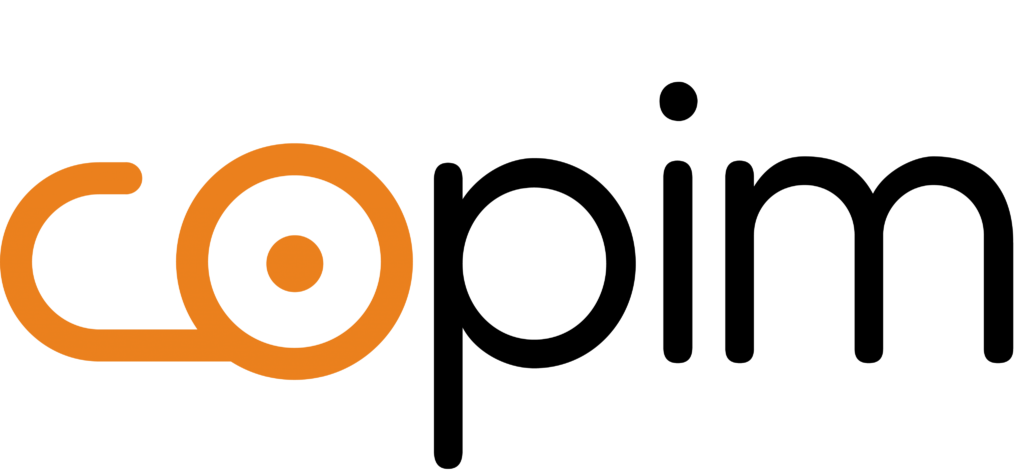Is Big Publishing Killing the Academic Author?
 Monday, November 20, 2023 at 1:25PM
Monday, November 20, 2023 at 1:25PM 'It’s my belief that you don’t make money until you make someone else money' - Marc Maron
The last few of weeks have seen the appearance of two articles examining the impact of corporatisation and conglomeration on literary fiction: not just the way novels are published but also the content of those novels; as well as how we understand the global literary canon of everyone from Saul Bellow, Philip Roth, John Updike, Albert Camus, William Burroughs, VS Naipaul, WG Sebald and Martin Amis, to Roberto Bolaño, Orhan Pamuk, Salman Rushdie, Ben Okri, Chimamanda Ngozi Adichie and Hanif Kureishi (a canon that is actually highly US-centric in its production and organisation). They are Scott W. Stern, ‘Big Publishing Killed the Author' (an essay reviewing Dan Sinykin's Big Fiction: How Conglomeration Changed the Publishing Industry and American Literature), and Alex Blasdel, ‘Days of The Jackal: How Andrew Wylie Turned Serious Literature Into Big Business'. Both are pieces of journalism, with all the associated drawbacks and limitations. Nevertheless, they have the effect of inadvertently emphasizing how academia, and open access publishing within it, provide a space for something very different to the commercial ecosystem of super-agents, management consultants, marketers and publicists that Stern and Blasdel depict. This is largely because, while some academic authors do have agents, there’s little prospect of individual scholars being a ‘moneymaker’ for the likes of Andrew Wylie in the way Stephen King and Cormac McCarthy are, let along the literary estates turned ’commercial assets’ of Vladimir Nabokov and Jorge Luis Borges.
Open access (OA) academic book publishing can still be a relatively small, non-profit, editorially independent affair, in which presses are able to take risks in order to make work publicly available that is intellectually challenging, at times even unusual and eccentric. (As I've written elsewhere, an unknown '[s]omeone can write a book on a subject so marginal and obscure it may be of interest to only one other person in the world ... yet it might still be worth' bringing out. Economic reality is therefore not such an 'important factor when it comes to deciding what an open-access' press should include in its list.) What’s especially exciting about OA publishing is that this risk-taking applies not just to the content of books but their form, too. (‘Form’ here refers to the organisation of the various elements that make up a book.) Hence some of the more radical open access presses have experimented with publishing titles on a fluid, living, processual basis using a copyright licence – Creative Commons CC-BY, but also Collective Conditions for Re-Use (CC4r) and even no copyright – that enables texts to be collectively and collaboratively written, edited and remixed.
Under pressure from the demands of capital for ‘growth and returns on investment’, literary publishing, by contrast, is increasingly focused on works (and authors) that can be marketed, publicised and sold as neoliberal commodities in an economy that positions the reader as customer. It’s a pressure that, according to Sinykin and Stern, has led to a change in the content of serious novels, most notably as a result of literary authors embracing the techniques of popular genre fiction: ‘from A.S. Byatt in Possession (romance) to Denis Johnson in The Stars at Noon (spy thriller) to Colson Whitehead in Zone One (zombie apocalypse)’. The comparison with open access, however, only serves to emphasise that the problem concerns more than just the content of such books.
Despite its association with creativity, self-reflection and the innovative use of language, literary publishing operates by producing variations within a quite limited set of formal conventions - constraints that are so naturalised and unmarked as to be effectively invisible. Novels are for the most part single-authored, usually with a central human protagonist in possession of a fixed and unified self who is cast into a developing storyline. (This explains why so many literary authors have found it a relatively simple matter to turn their hand to the even more profitable writing of memoirs and autobiography - or works of fiction that have their roots in them.) With few exceptions, their contents are arranged in a linear order so as to constitute an extended narrative designed to be read in a progressive temporal sequence in the physical form of a consecutively-paged, printed codex book. These volumes are published as fixed and finished autograph texts in uniform, multiple-copy editions. They are then made available to readers on a mass industrial basis as ‘closed access’ consumer products using an all rights reserved copyright licence. (And that’s without even mentioning the uniformity of these novels as material objects in their very differentiated numerousness: ‘their metadata, paratextual mediation, paper, binding, design, layout, use of white spaces, locations where the pages are cut and so on’.)
It should be emphasised that a willingness to adhere to such preformatted practices and structures is not a feature confined solely to those literary novels that are produced by conglomerate publishers. It is also a notable characteristic of the relative few works of multicultural, intersectional and experimental literature they are prepared to include in their lists; as well as of the auto-fiction authors such as Sally Rooney, Rachel Cusk and Karl Ove Knausgaard write in order to focus precisely on the ‘challenges of navigating the publishing industry’. It even applies to those novels that are published by the prize-winning independents like Fitzcarraldo Editions, ‘the avant-garde houses like New Directions, the small presses like Coffee House, and the university presses’. What's more, this is the case regardless of the fact that these non-corporates – and in some cases non-profits – expressely define themselves against, and thus in relation to and in terms of, the conglomerate publishers, 'putting out consciously literary fiction to counter the oversaturated commercialism of the big houses’, and ‘transgressive works by numerous authors of color to counter the overwhelming whiteness of trade imprints’. As the author and editor Rachael Allen observes:
A common note in acquisition meetings at publishing houses is that a book is too ‘academic’ [read ‘bad’, difficult, complex, intellectual], that the audience for a work ‘doesn’t exist’. That a book does not know ‘how to be marketed’. I have found that these books, usually the more formally innovative and boundary pushing works, to be authored by historically marginalised writers, who, now and in the recent past, are simultaneously cynically and vampirically exploited for their identities. There’s now a vulture-like focus on ‘discovering’ these authors, who fit the ‘accessible’ (read ‘good’) bill – working class writers, black and brown writers, writers in precarious circumstances, trans and queer writers.
If there’s something curiously old-fashioned about the version of the modern publishing industry that Stern and Blasdel engage with, much the same can be said of their versions of capitalism. We can leave for another time the question as to whether capitalism is in fact dead, and we’re now living under a form of technofeudalism that is even worse. What’s noticeable about Stern and Blasdel’s portrayal of big publishing is that it hasn’t even undergone the transition to surveillance capitalism yet. Although the impact of the rise of Amazon in reshaping contemporary fiction and accelerating the ‘neoliberalization of publishing’ is acknowledged by Stern, neither article contains any mention of data analytics, for instance.
The limitedness of the literary publishing worldview in this respect is perhaps one reason the training of AI engines on data that have been scraped from large corpora of text, including copyrighted works by published authors found in ‘shadow’ or ‘pirate’ libraries, has come as such a shock to many writers of fiction, John Grisham, Jonathan Franzen, George R.R. Martin, George Saunders and Jodi Picoult among them. These ‘avatars of conglomerate publishing’ are now suing OpenAI and Meta for mass scale copyright infringement in an effort to maintain a neoliberal system which is working quite nicely for a small number of highly profitable brand-name authors, their publishers and agents, but less so for everyone else:
‘Between 1986 and 1996 … 63 of the 100 bestselling books in the [US] were written by just six people: Tom Clancy, Michael Crichton, John Grisham, Stephen King, Dean Koontz, and Danielle Steel. Astonishingly, five of those six continue to dominate bestseller lists to this day. (No doubt Clancy would too, had he not died in 2013.)’
Contrast this with the findings of the 2022 Authors’ Licensing and Collecting Society (ACLS) survey. It reveals that the average earning of a self-employed author in the UK is £7,000. That represents a 38.2% decline in real terms since 2018. Moreover, 47% of total earnings are claimed by a mere 10% of authors (although it should be noted that ‘[w]omen, black and mixed-race authors, the very young, and very old, all earn less than their respective counterparts’).
At the same time, academic publishing and open access are not free from concerns with economics and the bottom line. Consider just how much of the mainstream discussion around OA is taken up with never-ending debates over business models – green, gold, hybrid, APC/BPCs, diamond – rather than exploring how we can produce intellectually ambitious forms of research and publishing, some of which might even be avant-garde, experimental or singular in nature.
The latest plan for a future ‘scholar-led’ OA system of ‘responsible publishing’ put forward by the cOAlition S consortium to replace the ‘prevailing business models’ is just the latest example. (As I’ve pointed out on the Radical Open Access mailing list, these plans are not really 'scholar-led' in the sense a lot of us have been using the term. Nor, contrary to how they are presented in a recent Nature article, are they a 'radical open access initiative'. And they certainly don't represent a 'revolution' in academic publishing.)
In fact, open access publishing is undergoing its own processes of conglomeration. Evidence Ubiquity's joining with De Gruyter in 2022. De Gruyter has in turn recently agreed to acquire Brill for €51.5m to form De Gruyter Brill. With their combined revenues of around €134 million and 750 employees, De Gruyter Brill is aiming to publish in excess over 3,500 books and 800 journals per year. Its self-declared aim is to create the leading academic publisher in the humanities.
As Leslie Chan points out, however, companies such as Elsevier, Wiley-Blackwell and Springer are increasingly looking to monetize not just academic content, but the ‘entire knowledge production workflow, from article submissions, to metrics to reputation management and global rankings’ and the related data extraction and analysis. Hence the partnership struck by Taylor & Francis with the Research Gate commercial social networking site for academics in October 2023.
Some of the ScholarLed community have even gone so far as to argue these companies are endeavoring to capture the whole ‘system of exchange between themselves and research-learning communities’, free from the mediation of public university libraries which these publishing conglomerates regard as ‘knots’ that hamper their ability to extract public funds.
The recent report by SPARC which examines the data privacy practices of Elsevier’s ScienceDirect business, ‘the leading academic discovery platform of the world’s largest publisher and many libraries’ largest vendor for collections', supports this view. It demonstrates how the tracking of users and the harvesting of their personal data, something that would have been considered beyond the pale in a traditional physical library setting, is now a regular practice through the platforms of these companies.
Moreover, the SPARC report notes that Elsevier, as an academic-publisher-come-data-analytics-business whose ‘products span discovery; research management, funding, and collaboration; publishing and dissemination; and research analytics’, is a subsidiary of RELX. The latter describes itself as ‘a global provider of information-based analytics and decision tools’. By amalgamating ten thousand data points relating to hundreds of millions of individuals, RELX is able to supply extensive databases of personal information to law enforcement agencies, governmental bodies and corporations. ‘RELX risk products have been documented as being used in ways that raise serious concerns, including to help monitor protestors’ social media feeds, surveil immigrants, blackmail women, and help in attempting to manufacture false terrorism charges against some of those who participated in anti-racism protests in the summer of 2020’.
On this account academic publishing seems to be an even more joined-up system of profit-driven conglomeration and control than that of serious literary fiction. Which is why I was enquiring a few weeks ago, following the publication of its latest World University Rankings by the Times Higher Education, about research that connects the dots between the THE, World University Rankings, university league tables, REF, Digital Object Identifiers (DOIs), Crossref (the world’s largest registry of DOIs and metadata), ORCID (co-developed by Crossref), Elsevier (a founding sponsor of ORCID) and such surveillance capitalism.
Are academic authors increasingly becoming mere ‘cogs’ in this ‘corporate machine’? Like their literary counterparts, will many of them too end up producing work that is less and less interesting as a result? Or is open access publishing that is actually radical and scholar-led capable of producing a very different future for the academic author?
 Gary Hall | Comments Off |
Gary Hall | Comments Off | 





